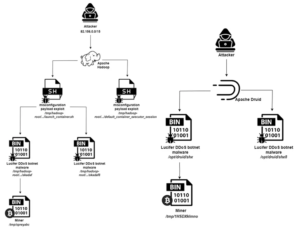Python Requirements Generator Script
Python Requirements Generator Script
Python Requirements Generator Script and Generating a Requirements.txt File Using genreq.py
When working with Python projects, one of the most important tasks is ensuring that the right dependencies are listed in a requirements.txt file. This file allows you to specify all the third-party modules your project depends on, making it easy to set up the same environment on a different machine. Generating an accurate requirements.txt is often a tedious and error-prone process, especially when using standard methods like pip freeze. These methods can sometimes generate incorrect versions or include unnecessary dependencies, leading to compatibility issues or bloat in your project.
One powerful solution to this problem is the genreq.py script. This Python script simplifies and streamlines the process of generating a requirements.txt by reading the imports in a specified Python file and matching them with the installed versions of the libraries. It works both inside and outside of virtual environments, ensuring that the correct dependencies are captured accurately.
Simplicity of Generating requirements.txt
The genreq.py script eliminates the need for manual entry or reliance on pip freeze, which often lists all installed packages, including those irrelevant to the specific project. Unlike pip freeze, which outputs a comprehensive list of all installed packages in the environment, genreq.py looks specifically for third-party packages imported in the Python script provided by the user. This targeted approach ensures that only the necessary dependencies are included in the generated requirements.txt file.
What makes this tool even more efficient is that it works equally well inside or outside a virtual environment. Inside a virtual environment, it ensures that only the packages relevant to the project are considered, while outside of it, it checks the global Python environment. This flexibility allows developers to generate the file in any setup without worrying about misidentifying irrelevant packages.
Ensuring Current Versions of Dependencies
One of the key benefits of using genreq.py is that it guarantees the requirements.txt file reflects the current versions of the libraries installed in the environment. By using pkg_resources, the script checks which installed versions of packages match the imports in the provided Python script. This ensures that the generated requirements.txt file is as current as the installed versions of Python and the third-party modules.
Unlike pip freeze, which can sometimes pull older versions or omit recent updates, genreq.py only includes the precise versions of the libraries currently in use. This ensures compatibility across environments and helps avoid issues where an older version of a package might be installed in a new setup, causing bugs or errors.
Python Requirements Generator Script Accuracy and Ease of Use
The ease with which genreq.py generates an accurate requirements.txt makes it an invaluable tool for developers. Traditional methods like pip freeze can often result in inaccurate version numbers, including unnecessary or outdated dependencies. Moreover, manually managing requirements.txt entries can lead to errors, especially when switching between multiple environments.
In contrast, genreq.py simplifies this process. It automatically analyzes the imports, checks installed packages, and writes the necessary ones to the requirements.txt file, with the correct versions based on the current environment. This level of precision makes it easier to share and deploy Python projects without worrying about dependency mismatches.
In conclusion, genreq.py is a simple yet powerful tool that ensures accurate, up-to-date, and environment-specific dependencies are listed in the requirements.txt file. By automatically extracting and validating imports, it eliminates the need for manual dependency tracking and avoids the common pitfalls of other methods. This script not only saves time but also reduces the likelihood of compatibility issues, making it an essential tool for any Python Developer.








